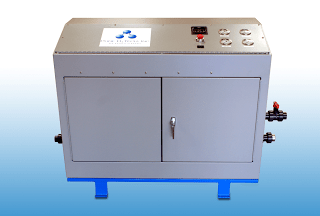
 |
|
Figure 1. Pure O Tech BES-300. Eliminates Biofilm from irrigation tubing.
|

 |
|
Figure 1. Pure O Tech BES-300. Eliminates Biofilm from irrigation tubing.
|
LEDs are gaining more and more popularity in the Netherlands. From hydroponic production of tomatoes to young plant production to production of flowerin plants like kolanchoes.
If you speak Dutch you will really like the below video and growing flowering crops under LEDs in a multlayering style (vertical farming) and if you do not we think you should watch anyway and call us for help in translating. Enjoy.
Visit our corporate website at https://hortamericas.com
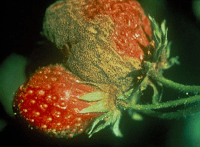
Visit our corporate website at https://hortamericas.com.
At Hort Americas we receive questions on numerous topics. Recently we had someone ask us to explain pesticide signal words (Caution vs. Warning vs. Danger). Please click on the above title to access the Signal Word Fact Sheet offered by the National Pesticide Information Center (http://npic.orst.edu/index.html).
Visit our corporate website at https://hortamericas.com
Check out this excellent video of Hydroponic Lettuce Production.
This system is called MGS and is from a European company (and vendor partner of Hort Americas) call HortiPlan.
Please contact Hort Americas directly if you have any questions at infohortamericas@gmail.com.
Visit our corporate website at https://hortamericas.com
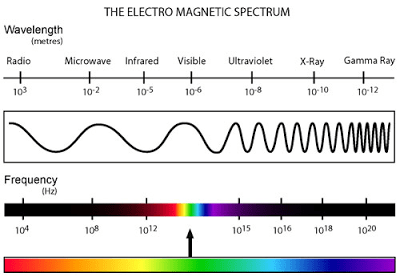
 |
|
Figure 1. The electromagnetic spectrum. The visible spectrum encompasses approximately 380 nm to 780 nm. Photosynthetically active radiation or PAR is 400 nm to 700 nm.
|
 |
|
Figure 2. Image depicting photons of light falling on one square meter.
|
 |
|
Figure 3. Map of outdoor DLI by month throughout the United States.
Visit our corporate website at https://hortamericas.com.
|
Visit our corporate website at https://hortamericas.com

 |
|
Figure 1. The Electro Magnetic Spectrum. Visible light is considered to be between 380 nm to 780 nm.
|
 |
|
Figure 2. Image of LED modules being used in multilayer production. Photo courtesy of Philips Lighting (www.philips.com/horti).
|
 |
|
Figure 3. Interlighting module being used in high-wire greenhouse tomato production. Photo courtesy of Philips Lighting (www.philips.com/horti).
|
 |
|
Figure 4. . Philips GreenPower LED flowering lamp. Photo courtesy of Philips Lighting (www.philips.com/horti).
|
Hort Americas would like to welcome Floricultura (Growers of Premium Quality Orchids) to the USA.
Below is a great video (even though it is in Dutch) from Hortifair 2009.
Visit our corporate website at https://hortamericas.com
Hort Americas is proud to share this link from CNNMoney.com. The link takes you to an Article on Urban Agriculture (Farming) and the impact it can have on our future. It includes mentions of innovative companies like: Eco Spirit, TerraSphere Systems, Big Box Farms, Gotham Greens and Cityscape Farms and innovators such as Dickson Depommier.
Please read more about the article here:
Urban Farming 2.0: No Soil, No Sun
If there are any questions please email us at infohortamericas@gmail.com.
Visit our corporate website at https://hortamericas.com
The best way to control pest in hydroponics is thru good sanitation practices.
Visit our corporate website at https://hortamericas.com
For this post only video.
Visit our corporate website at https://hortamericas.com
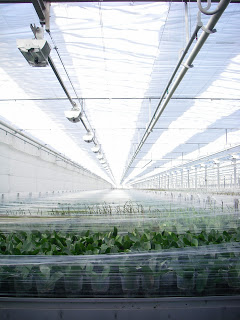
 |
| Advanced Orchid Production |
 |
| Hydroponic Strawberry Production and Research |
 |
| Orchid Bark Options |
 |
| New Benonomic |
 |
| Orchid Accessories |
 |
| Floricultura! |
 |
| Ontario Greenhouse Growers Association |
If you would like to learn more about our trip or any of the photos that you see here please simply let us know. (Anyone can email us a infohortamericas@gmail.com.)
Visit our corporate website at https://hortamericas.com
Visit our corporate website at https://hortamericas.com
Hort Americas is continually interested in watching the urban agriculture movement. (Especially as it relates to areas like Detroit, Michigan.)
The below video shows how small farms can bring “life” back to communities.
The next step for these farmers will be to create more opportunities (good paying jobs, growth/education for young people, and community development.)
At this point in time, in order to create a stable environment for all it will be important to create a year round of produce using technology to out smart the Michigan winters and technology to out compete cheap supply from other warmer climates.
It is truly exciting to watch disciplines like controlled environment agriculture, hydroponics, aeroponics, etc. be used as potential tools in an endeavor as important as rebuilding a city, a community and what will become a generation.
Visit our corporate website at https://hortamericas.com
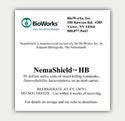
Biowork’s Nemashield a great option for Hydroponic Greenhouse Vegetable Growers looking at controling soil-borne insects.
Visit our corporate website at https://hortamericas.com
Read this Exectuive Summary from the USDA
Executive Summary: During the week of April 13, 2010, FAS/Mexico visited protected agricultural facilities in the states of Jalisco and Sinaloa. Production under these houses has transformed Mexican agriculture and continues to adapt unique technologies depending on weather conditions and economic factors. Protected agricultural production uses installations of low to medium technology and ranges from hard plastic to anti-aphid netting (depending on the definition of greenhouse or shade house). A few use hydroponic systems, but most use drip irrigation without heating systems or CO2. Half of the area devoted to protected agriculture uses shade houses since this type of technology can adapt to the weather more efficiently. Most of the growers agreed that due to the latitude of Mexico and warmer climates in producing areas, shade houses adapt better (especially considering shade houses are typically cheaper). According to producers, weather conditions dictate what kind of technology is needed to guarantee optimal conditions of growth and quality production while following food safety production regulations and therefore, more producers are moving to shade houses. Whether through greenhouses or shade houses, production under protected agriculture continues to grow rapidly. The percentage of area planted using protected agriculture has increased nearly 40 percent over the past three years. The United States is the primary market for products grown under protected agriculture, but growers continue to export larger quantities each year to other markets.
Please email us at infohortamericas@gmail.com for additional information.
Visit our corporate website at https://hortamericas.com
Hort Americas believes that both sides should be heard and looked at when it comes to Hydroponics, Vertical Farming, Urban Agriculture and CEA.
And while we at Hort Americas may believe firmly in new “farming” opportunities, we completely understand the Macro view and their potential limitations.
Please take a minute to read this post from Graham Land at Greenfudge.org and the article by George Monbiot, before you make up your own mind.
In Monday’s Guardian George Monbiot slams the concept of ‘vertical farming’ in a piece, entitled ‘Greens living in ivory towers now want to farm them too’.
His main beef is that a Columbia University parasitologist named Dickson Despommier has been getting a lot of support in the green media for his idea to create skyscraper farms in densely populated urban areas like New York City, which might be a brilliant idea, but it’s a fanciful one as well.
This immediately reminded me of stories about an underground indoor rice farm in Tokyo’s financial district, which turned out to be an expensive publicity experiment.
Monbiot sees vertical farming as a distraction. Water and farmland shortages along with a growing world population bring agriculture and food towards the forefront of environmental issues. Scary stuff in terms of crop failures and resultant starvation for the poor have-nots, but the haves in places like Manhattan are interested in expensive high tech luxury solutions like skyscraper farming?
Despite the impracticality and massive expense the environmental media has been all over it. In a Time magazine article, there is a partial admission of the fault:
“[…] Despommier concedes that it would cost hundreds of millions to build a full-scale skyscraper farm. That’s the main drawback: construction and energy costs would probably make vertically raised food more costly than traditional crops. At least for now.”
Honestly, vertical farming sounds like a cool university project for a designer or architect, but the extent to which it is taken by Despommier seems far from realistic.
I prefer the other kind of urban farming that is happening in Detroit. People move out, abandon houses and land, the remaining folks utilize that land to grow food, which they eat and sell. Brilliant, efficient and not reliant on some expensive high-tech structure in an exorbitantly priced neighborhood. Maybe I’m just completely ignorant, but besides roof gardens, urban gardens or small plots, farming in Manhattan just doesn’t make much sense.
Read about that in this BBC News article:
Urban farming takes root in Detroit
We should be as efficient as we can, but that means behavior suited to the immediate surroundings, not forcing a square peg into a round hole. How about practical solutions like wasting less energy by importing less food? How about growing crops primarily for human consumption rather than wasteful, intensive livestock farming?
Still, if vertical farming happens to work, then fine, knock yourself out.
Visit our corporate website at https://hortamericas.com
Hort Americas recently saw this video from a news station in Tampa Bay, Florida.
However there are times that major turmoil and obstacles can create new and unique opportunities.
Watch this video to see how aquaponics and hydroponics may be an option for those looking for new ventures.
Visit our corporate website at https://hortamericas.com
Soon to be available at Hort Americas!
Rooftop farming with the Tower Garden is perfect for anyone interested in Hydroponics, Vertical Farming and Urban Agriculture.
Visit our corporate website at https://hortamericas.com